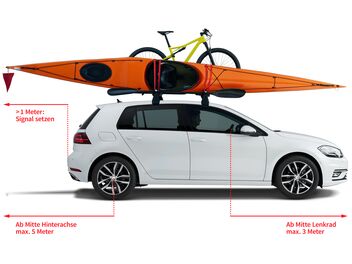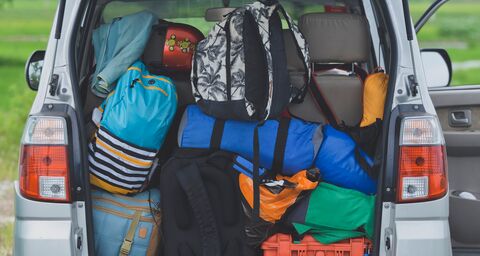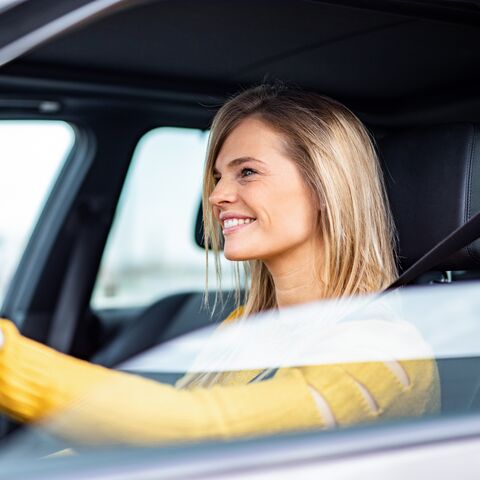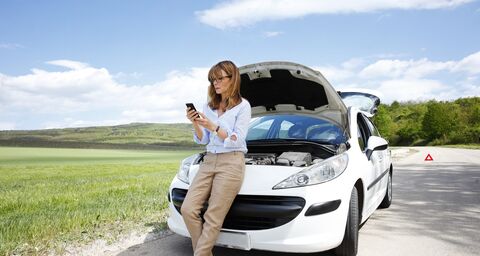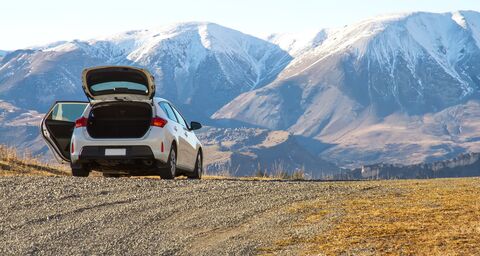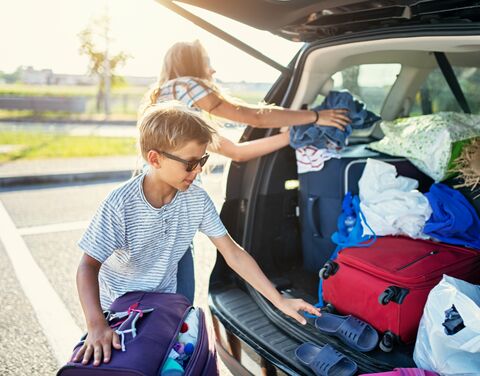
Five tips for loading your car safely
You'll often see cars passing you on the road that are loaded right up to the roof. It should be obvious that piled-up baggage restricts the driver's field of vision and makes accidents more likely, but deciding what not to take isn't always easy. Nevertheless, careful packing is the key to a safe journey and also helps you to keep an eye on things.
Five helpful tips for loading your car safely
Travel stress usually begins with loading the car. Even if it's just a weekend trip, you want to take everything with you, from camping equipment to cuddly toys, but it only takes a sharp curve or heavy braking for your suitcases and other items to start banging against the sides of your car or even flying around the interior, and that can be dangerous. The smallest distraction while you're driving can lead to an accident, and an unsecured load can injure anyone inside the car. How should you load your baggage into the trunk and back seat and secure it to prevent this from happening?
AXA Accident Research & Prevention has put together these tips to help you enjoy a safe journey.
1. Place heavy and bulky objects at the bottom.
Items moving around inside the car aren't just annoying, they can be a real hazard – whether it's just a water bottle in the footwell distracting you or something big and heavy, which could severely damage your car and harm those traveling in it. That's why heavy items should go right at the bottom.
2. Line the trunk with a non-slip rubber mat.
To make sure that your suitcases, bags, etc. don't slide forward under heavy braking, you should place them on a non-slip surface. Rubber mats are ideal, and you can find them in various sizes at hardware and car accessory stores. They also protect the lining of your trunk from wear and tear as well as dirt. You might even have something suitable at home already. What about your yoga mat, which you might want to take on vacation anyway?
3. Cover loose items with a baggage net or sheet and secure them with straps.
Baggage nets and sheets fixed to the sides of the trunk and the back of the rear seat can help a lot in terms of safety by holding items in place when you brake heavily and thus preventing injuries and damage to the windshield. Straps improve safety even further. Fasten them to any fixing points fitted to your trunk. These can usually be found on or underneath the mat and on the side walls.
4. Place items on the back seat and secure them with the safety belts.
Safety belts aren't just there for people, they're also great for holding baggage and other items in place on the back seat.’
Here's another top tip: always attach the belts, even if no one's riding the back. They'll hold back items in the trunk that might surge forward under braking.
5. Attach a wooden board to the seat backs, and don't load the trunk above the top of the back seat.
If you're carrying pointed items like Nordic walking poles or tentpoles, it's advisable to attach a wooden board to the backs of the front seats. It will make sure that nothing can pierce the seats and injure the driver and front passenger.
You should also avoid stacking items higher than the top of the back seat so that nothing can be flung forward out of the trunk. Follow all these tips, and enjoy a safe and stress-free journey!
Load up the right way for a safe journey
Load your car up the right way and take note of our safety tips to minimize the risk of accidents and make sure everyone has a safe journey. Adapting your driving style and managing your luggage carefully can help to reduce stress and increase comfort. If you are unfortunate enough to experience an accident or a breakdown, travel insurance with vehicle assistance or roadside assistance as part of your car insurance will prove invaluable.
How to transport bulky items – such as a kayak
- The maximum roof load stated in the vehicle registration document must not be exceeded.
- The load must not extend more than 3 m forward from the center of the steering wheel or 5 m backward from the center of the rear axle.
- The load must not extend beyond the sides.
- A warning sign must be attached to the rear of the load if it protrudes by 1 m or more.
How to transport bikes
- The vehicle's license plate, brake lights, and lighting must remain visible.
- Bikes must not overhang by more than 20 cm on either side of the vehicle's rear, and the total width must not exceed 2 m.
- Carry bikes on purpose-built racks and use stops to regularly check that all fasteners are still tightly secured.
- Be aware of the total height (including load), for example when driving into a parking garage.
